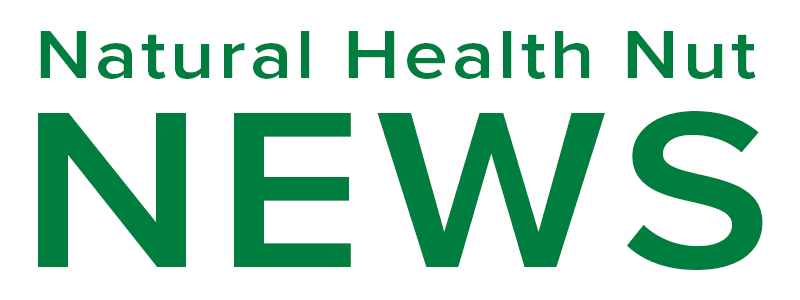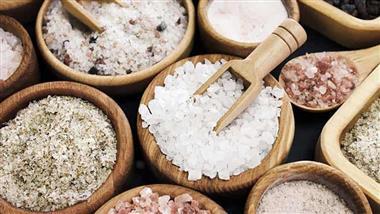
Story at-a-glance
- For 50 years, medicine has waged a misguided war against critical sources of health like salt and sunlight while avoiding discussing the real causes of diseases. Because of this, the dangers of salt are relentlessly focused on despite evidence not supporting them
- In parallel, the extreme dangers of consuming too little salt are rarely discussed in the medical field — despite dangerously low sodium being one of the most common conditions seen in hospitalized patients, and chronically low sodium greatly increasing one’s risk of dying
- The war against salt originated from the belief salt raises blood pressure — despite the evidence showing it doesn’t
- Many of the foundational beliefs around high blood pressure are not supported by the existing data, leading to situations where patients are routinely medicated to blood pressures far below what is safe, significantly reducing their quality of life and increasing their risk of severe injuries or death
- Salt restriction creates many similar complications to dangerously low blood pressures (e.g., fatigue, lightheadedness, erectile dysfunction). Because of this, many find their health and energy dramatically improves once they start consuming healthy salts
Many medical policies are driven more by profit than by evidence of what truly benefits patients. Because of this, we frequently see medicine refuse to ever discuss the things that are making us sick (e.g., numerous studies show vaccines make children 2 to 10 times more likely to develop chronic illnesses that are now widespread) while in tandem, we are relentlessly pressured to put all focus onto a few things which do not make enough money for lobbyists to defend them.
In this article, I will explore one of my key frustrations with this dynamic: the medical establishment’s ongoing war on salt. I will focus on one of my major frustrations with this medical paradigm — the war against salt.
Note: The war against salt began in 1977 when a Senate Committee published dietary guidelines arguing for reduced sodium consumption1 despite the existing evidence not supporting this.2 Since then, like many other bad policies, it has developed a nearly unstoppable inertia of its own.
Is Salt Bad for You?
Many people you ask, particularly those in the medical field will tell you salt is bad, and one of the most common pieces of health advice given both inside and outside of medicine is to eat less salt. Over the years, I’ve heard two main arguments for why salt is bad for you. First, salt raises blood pressure, and high blood pressure is deadly, so salt is too and should be avoided.
Second, with individuals who have heart failure, eating too many salty foods will create exacerbations of their condition, and as a result, after holidays where people eat those foods (e.g., the 4th of July) more heart failure patients will be admitted to hospitals for heart failure exacerbations.3
Note: Excessive sodium causes these exacerbations because if an excess amount of fluid accumulates in a compromised system (e.g., because the weakened heart can’t move enough blood to the kidneys to eliminate it), it then overloads other parts of the body (e.g., causing swelling and edema, which, if in the lungs, can be life threatening).
Because of these two things, many in the medical field assume that salt must be bad for you and hence strongly urge patients to avoid it (to the point you often see an elderly patient who loves her salt be aggressively pushed into abandoning it). Unfortunately, the logic behind those two arguments’ logic is less solid than it appears.
• The great blood pressure scam — Since medicine revolves around making money, patient care is often structured to be as profitable as possible. In turn, since recurring revenue is a foundational principle of successful businesses, a key goal in medicine often ends up being to have as many patients as possible on lifelong prescriptions.
In most cases, the drugs that are developed and approved have real value for specific situations, but those situations are not enough to cover the exorbitant cost it requires to get a drug to market. As a result, once drugs are approved, the industry will gradually come up with reasons to give them to more and more people and in turn quickly arrive at the point where many of their customers have greater harm than benefit from the pharmaceutical.
One classic way this is done is by creating a drug that treats a number, asserting that the number has to be within a certain range for someone to be healthy, and then once that is enshrined, narrow and narrow the acceptable range so less and less people are “healthy” and hence need the drug (e.g., this happened with cholesterol once statins were invested). Likewise, this characterizes the history of blood pressure management:
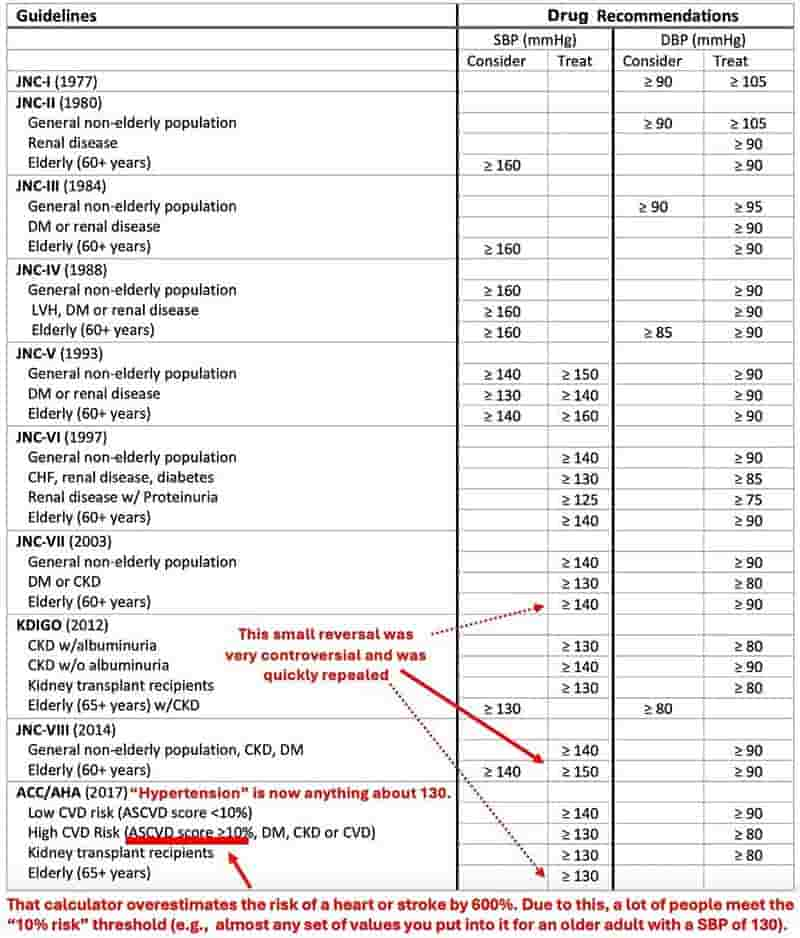
Because of this, many people (particularly the elderly) are frequently pushed to excessively low blood pressures which reduces critical blood perfusion for the organs — which particularly unfortunate as high blood pressure is often a symptom of poor circulation rather than its cause.
As such, reducing the remaining circulation by lowering blood pressure then makes them significantly more likely to get a variety of significant issues (e.g., kidney injuries,4 cognitive impairment,5 macular degeneration6), the most studied of which is lightheadedness or fainting leading to (often devastating) falls.7 Additionally, blood pressure medications also often greatly reduce one’s quality of life (e.g., by causing fatigue8 or erectile dysfunction9).

Note: For those interested in learning more about the great blood pressure scam (a lot of what we’re taught about blood pressure is less than accurate), it can be read here.
• Low sodium — A cornerstone of cementing the blood pressure market has been to make everyone terrified of salt (much in the same way making people terrified of the sun is a cornerstone of the lucrative skin cancer treatment market — despite the fact the deadly skin cancers are actually due to a lack of sunlight).
Remarkably, much like the great dermatology scam (which has been able to make a massive amount of money from removing cancers that almost never become life threatening) the link between blood pressure and salt consumption is actually quite tenuous.
For example, the most detailed review of this subject found that drastic salt reduction typically results in less than a 1% reduction in blood pressure.10 Likewise, doctors rarely recognize that patients in the hospital are routinely given large amounts of IV 0.9% sodium chloride, in many cases receiving ten times the daily recommended sodium chloride we are supposed to consume — yet their blood pressure often barely rises.
Note: Some individuals and certain ethnicities are salt-sensitive. They may experience greater increases in blood pressure or worsening of other symptoms when consuming moderate amounts of salt (although this does not apply to the majority of the population).11
Despite this, patients are often pushed to eliminate all (or almost all) salt from their life. Beyond this significantly reducing their quality of life (as people like salty foods) it can be dangerous. For example:
◦A study of 181 countries found that countries with lower salt consumption have shorter life expectancies.12
◦Low sodium levels (hyponatremia) are strongly correlated with a risk of dying (e.g., the salt consumption target we are recommended to follow increases one’s risk of dying by 25%13). Likewise, a common reason for hospital admissions, are symptoms resulting from hyponatremia (as once sodium levels get too low, it can be very dangerous), and 15% to 20% of hospitalized patients have low sodium levels at admission.14
Note: Mild hyponatremia is also associated with an increased risk of death.15
◦Reduced salt consumption, not surprisingly, increases one’s risk of hyponatremia (e.g., one study found salt restriction made hypertensive patients 9.9 times more likely to develop hyponatremia).16
Note: Many blood pressure and psychiatric medications put you at risk for dangerously low sodium levels17 (e.g., SSRI antidepressants make you 3.16 times more likely to develop hyponatremia18). Additionally, certain patients (e.g., those with autonomic nervous issues) are much more sensitive to salt restriction causing hypotension (low blood pressure).19
◦Low dietary sodium intake causes a 34% increase in cardiovascular disease and death.20
◦Rapidly lowering blood sodium levels reduces cardiac output and blood pressure in a manner resembling traumatic shock (which frequently raises the heart rate as the heart tries to compensate for insufficient blood).21 Low salt consumption, in turn, has been repeatedly linked to tachycardia22 (and atrial fibrillation).23
◦Aging kidneys have a reduced ability to respond to changes in blood sodium levels (putting them at greater risk for hyponatremia following sodium deprivation).24
Note: Three of the most common symptoms of hyponatremia (which lead people to go to the Emergency Room) are fatigue, confusion, and difficulty concentrating.25
◦Many have reported discovering low salt consumption was the cause of their fatigue and lightheadedness (which has also been proven in a clinical trial which treated postural orthostatic tachycardia syndrome with increasing dietary sodium).26

Note: Chronically low blood pressure (e.g., POTS) has been shown to be one cause of chronic fatigue syndrome,27,28 and POTS is often treated with increased dietary sodium.29
◦Chronic sodium depletion has been linked to fatigue and insomnia.30

◦Many readers have shared with me that a variety of health issues improved once they began consuming natural salt (e.g., headaches, erectile dysfunction, waking up in the middle of the night, or chronically elevated blood pressures).
Note: A variety of other health issues (e.g., worsening of diabetes31 or a stomach hydrochloric acid deficiency)32 have also been linked to insufficient dietary sodium.33
U-Shaped Curves
Frequently in physiology, a number will be observed which, when improved, appears to correlate with improved health, leading to the assumption as much as possible should be done to improve that number. In many cases however, at some point, the effect reverses, and it becomes harmful to further increase or decrease that number.
For example, with blood pressure, a few data points showed that if it’s too high, it increases one’s risk of death, so this was used to create a linear model which extrapolated that trend to much lower blood pressure values.34
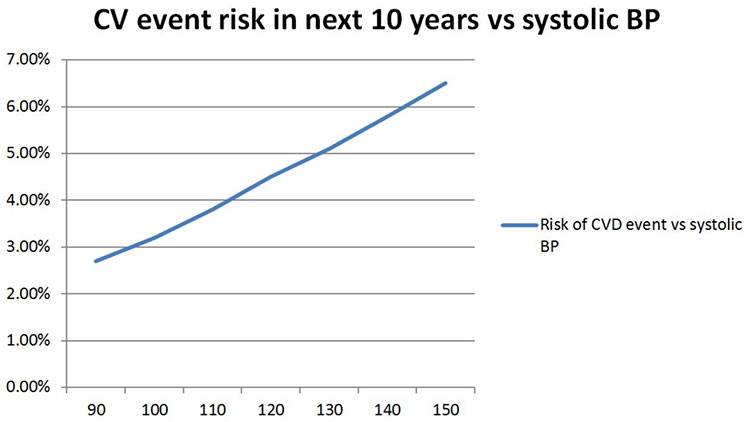
Yet, in real life, once blood pressure gets too low, the trend reverses and one’s risk of dying increases rather than decreases:35
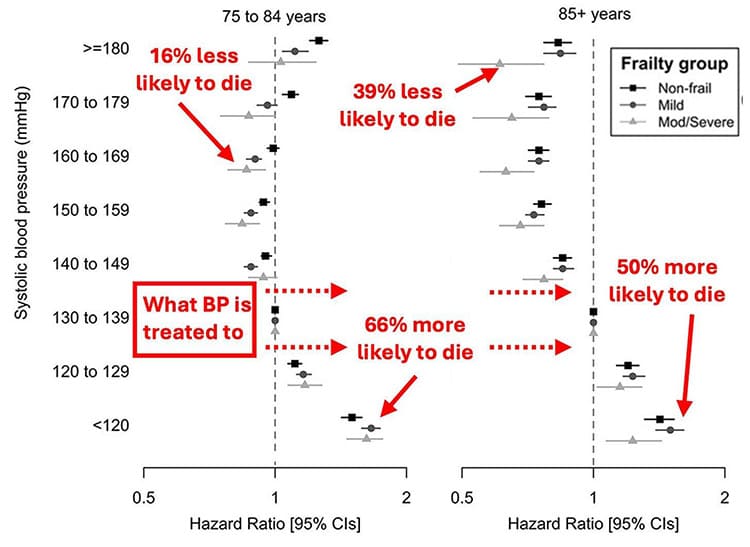
Likewise, both high and low sodium diets have been shown to increase the risk of death.36 This U-shaped curve was best demonstrated in a study of chronic kidney disease and heart failure patients:37

Note: Due to excessive sodium consumption causing HF exacerbations, those patients are often told to avoid dietary sodium, yet there are many cases of them improving once they add some salt back into their diet (as they had been on the left side of this curve).38 While this has long been known within the integrative health field, in the last few years, data at last is emerging to support this,39,40,41 and Europe is beginning to rescind salt restriction recommendations for heart failure patients.42
Zeta Potential Curves
When fluid contains suspended particles (which is true for most fluids in nature), those colloids can either have finely dispersed or clumped together particles.
One of the primary determinants of this is the electrical repulsion or attraction between the particles, something quantified by a system’s zeta potential and heavily influenced by the charges present in a solution (e.g., too many positive charges will make fluid components like blood cells clump together and is why the aluminum in vaccinations frequently trigger microstrokes of varying severity).
In turn, many diseases result from poor zeta potential, including poor circulation and fluid congestion or edema (e.g., that seen in heart failure). One critical aspect of zeta potential is that it follows a U-shaped curve in relationship to the amount of a charged ion present, with both too little or too much of it being problematic.
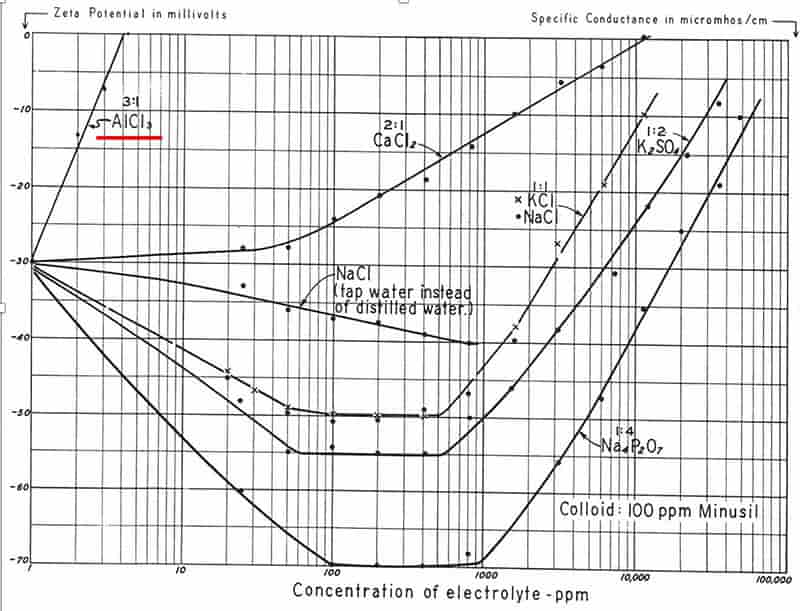
Note: Giving IV sodium infusions to hospital patients will frequently greatly improve their condition, something nonchalantly attributed to everyone being “dehydrated” but more accurately due to their blood sodium being too low to adequately support the physiologic zeta potential. Likewise, many people often feel much better after getting outpatient saline infusions at concierge hydration clinics.
This in turn helps to explain why too little salt (e.g., through intentional sodium restriction or unintentional sodium restriction through a diet that puts you into ketosis [which increases sodium excretion43]). can be problematic while at the same time high salt diets can be problematic as well.
Healthy Salts
With high salt diets, I believe a few points are particularly important to recognize:
1. I’ve had multiple cases where I ate fairly salty foods right before bed, then woke up feeling extremely dry throughout my body with a fast heart rate. Through trial and error I figured out drinking high quality reverse osmosis water would help me feel better.
Later, from reading Thomas Riddick’s work on zeta potential, I understood what was happening and measured the conductivity in my urine, which showed that my kidneys indeed were trying to dump a large amount of sodium and restore my zeta potential.
Riddick, tracked many cases where more severe versions of what I experienced resulted in cardiovascular incidents (as poor zeta potential causes blood to clot together and triggers heart arrhythmias as the heart struggles to push this congested blood).
Note: Many have reported to me that zeta potential restoring protocols and fixed their atrial fibrillation.
2. Riddick (and those who followed him) found that processed foods and many restaurant meals tended to be problematic for zeta potential and hence advised reducing the frequency of their consumption (e.g., I try to minimize eating out because of the congestion I feel after restaurant meals).
Note: Since there are so many other harmful things in processed foods, it is very possible many of the issues associated with salty foods are due to something else that is present in it (e.g., seed oils or toxic additives).
3. Riddick believed one of our key issues with salt was that potassium was better for zeta potential than sodium, so by switching our potassium based sources of salt (e.g., vegetables) for highly salted foods, we were creating an unhealthy balance between the two. Likewise, modern research has shown adequate potassium alongside sodium is critical for cardiovascular health (e.g., normalizing blood pressure).44
Note: Potassium deficiency causes a variety of issues (e.g., fatigue and muscle cramps) and many practitioners over the years have found supplementary potassium greatly helps their patients.
4. In general, I noticed most of the salt overload issues individuals run into come from eating foods high in refined salt (e.g., salty processed foods) rather than those consuming natural salts. This has led me to suspect that a major issue with salt is either something else present in the processed foods or something specific to processed salts. At this point, my best guesses is that is due to refined salts:
◦Lacking minerals we otherwise need for homeostasis.
◦Containing other problematic additives (e.g., refined salt tends to clump together so it requires anti-caking agents, many of which adversely affect zeta potential).
◦Having a refinement process that introduces unhealthy chemicals to the salt (e.g., sodium carbonate, sodium hydroxide, barium chloride or barium carbonate are used to remove minerals besides sodium from refined salt).
Note: Their bleaching or heating may also be problematic.
As such, we always advise patients to consume natural salts and have found this helps patients while rarely causing issues.
Note: In many cases, the best results with a natural salt are gotten if a small amount is mixed into water drank throughout the day, something I believe is due to fully dispersed salts (e.g., those pre-dissolved in water) being the best for restoring the physiologic zeta potential.
Conclusion
As medical approaches to treating disease often do not address the root causes of illness, this requires creating easy scapegoats (e.g., the sun,45 saturated fat,46 or eggs) to blame for their treatment failures.
This is particularly unfortunate as those scapegoats are often actually essential for health. Fortunately (or unfortunately depending on how you look at it) our medical system is now bursting under the strain of the costs of those approaches and thanks to the ascendancy of the MAHA movement and the need to cut deficit spending, it is now becoming possible to re-examine the faulty assumptions public health rests upon.47
We now have a real window to do this, and since there are so many different things that need to be seriously re-examined, my goal has been to do my part to help many of these things that have deeply frustrated me for decades at last be addressed. Fortunately, I am but one of many rising to the occasion, and I thank each of you for being part of that journey with me and doing what you can to bring health back to the world.
Author’s Note: This is an abridged version of a longer article that goes into more detail on the importance of salt and which natural salts are the healthiest for you. That article can be read here, along with a companion article about the great blood pressure scam (which can be read here).
A Note from Dr. Mercola About the Author
A Midwestern Doctor (AMD) is a board-certified physician from the Midwest and a longtime reader of Mercola.com. I appreciate AMD’s exceptional insight on a wide range of topics and am grateful to share it. I also respect AMD’s desire to remain anonymous since AMD is still on the front lines treating patients. To find more of AMD’s work, be sure to check out The Forgotten Side of Medicine on Substack.
- 1 Am J Public Health. 2014 Jan;104(1):59-69
- 2 The American Journal of Medicine, Volume 130, Issue 9, September 2017, Pages 1011-1014
- 3 JAMA Intern Med, Published Online: July 2019, 179 (7):1006-1007
- 4 BMJ 2021;372:n189
- 5 Theconversation.com, October 1, 2019
- 6 Ophthalmology. 2014 Apr 29;121(8):1604-1611
- 7 JAMA Intern Med, Published Online: April 2014;174;(4):588-595
- 8 Consensus.app, Accessed June 2025
- 9 Curr Opin Cardiol. 2015 Jul;30(4):383-90
- 10 Cochrane.org, December 12, 2020
- 11 Hypertension, Wolters Kluwer Health, Inc. November 1, 1996
- 12 Eur Heart J. 2020 Dec 20;42(21):2103–2112
- 13 Medscape.com, May 07, 2014
- 14 Medscape.com, January 09, 2025
- 15 Kidney Int. 2013 Apr;83(4):700-6
- 16 PloS One, December 3, 2024
- 17 J Clin Med. 2022 Sep 30;11(19):5810
- 18 Eur Psychiatry. 2024 Feb 26;67(1):e20
- 19 Autonomic Neuroscience, Volume 236, December 2021, 102891
- 20 The Lancet, Volume 388, Issue 10043, 465-475
- 21 Yale University School of Medicine, September 15, 1945
- 22 Front Physiol. 2016 Mar 24;7:111
- 23 J Intern Med. 2020 Nov 19;289(5):700-708
- 24 Clin Geriatr Med. 2013 Feb;29(1):275-319
- 25 Mayo Clinic, Accessed June 2025
- 26 J Am Coll Cardiol. 2021 May 4;77(17):2174-2184
- 27 JAMA, Published Online: September 27, 1995;274;(12):961-967
- 28 European Journal of Clinical Investigation, 40(7), 608-615
- 29 Dysautonomiainternational.org, Accessed June 2025
- 30 Medical Hypotheses, Volume 79, Issue 6, December 2012, Pages 799-804
- 31 J Diabetes Res. 2021 Aug 19;2021:9012887
- 32 A Midwestern Doctor, August 18, 2024
- 33 Amazon, The Salt Fix: Why the Experts Got It All Wrong–and How Eating More Might Save Your Life
- 34, 35 A Midwestern Doctor, July 29, 2024
- 36 Am J Hypertens. 2014 Sep;27(9):1129-37
- 37 Circulation. 2012 Jan 5;125(5):677-684
- 38 American Journal of Clinical Nutrition 93(2):332-7
- 39, 40 JAMA Intern Med, December 2018;178;(12):1693-1700
- 41 The Lancet, Volume 399, Issue 10333, 1391-1400
- 42 European Journal of Heart Failure, Volume 26, Issue 4, April 2024, Pages i-vii, 707-1100
- 43 Aletenutrition.com, April 06, 2021
- 44 Mercola.com, May 13, 2025
- 45 A Midwestern Doctor, May 31, 2025
- 46 A Midwestern Doctor, June 30, 2024
- 47 A Midwestern Doctor, June 05, 2025
Source: Source link
Publish Date: 7/11/2025 12:00:00 AM
